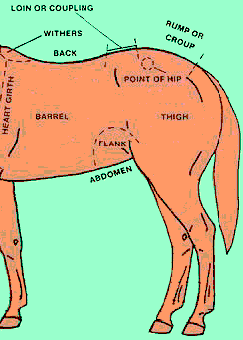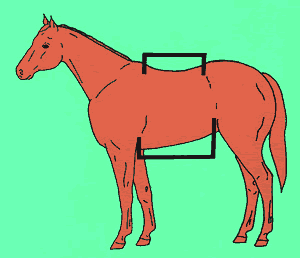
Ashley Griffin, University of Kentucky
The topline of the horse includes the withers, back loin (or coupling), and croup. When viewed from the side, the properly balanced horse should be higher at the withers than at the croup. When the withers are higher than the croup, the hindquarters are better positioned to move properly under the horse, which enhances the horse’s athletic ability. Strength of topline and loin muscles also influence soundness and athletic ability.
The ideal withers should be sharp, prominent, and well-defined. Well-defined withers help hold the saddle in place without excessive tightening of the front cinch. Rounded or flat withers require more cinch pressure to secure the saddle, which means less comfort for the horse.
Horses should have a short, strong back relative to a longer underline. Length of back plays an important role in balance, length, and type of stride. Length of back is directly related to the length and slope of the shoulder and the top-to-bottom line neck ratio. Horses with excessively long backs are unbalanced and weaker in their toplines than shorter-backed horses.
The loin is located between the last rib and the croup. It should be well-muscled and strong rather than long, weak, and lightly muscled. Short, muscular loins are needed to carry power from the hind legs forward.
The croup should be long and gently sloping. This adds to the stride as well as adds dimension and muscling to the hindquarter. There are breed differences in the shape of croups. Stock horse breeds (Quarter Horses, Paints, etc.) will have a more sloping croup than the pleasure horse breeds (Arabians, Saddlebreds, etc.).
Relationship of top to bottom line




